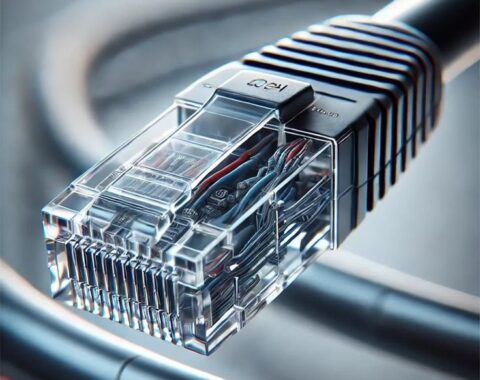Structured networking involves a systematic layout of cabling and devices to ensure reliability, organization, and performance. Below are the key components that make up a structured network, along with their roles and relevance:
Cabling Infrastructure (Horizontal & Backbone Cabling)
What it is:
Horizontal Cabling connects workstations (e.g., PCs, printers) to the telecommunications room.
Backbone Cabling connects different telecommunications rooms, data centers, or floors in a building.
Relevance:
Forms the physical backbone of any wired network.
Supports high-speed data transfer and consistent connectivity.
Essential for structured layout and scalability.
Common cable types: Cat5e, Cat6, Cat6a, Cat7, fiber optic.
2. Patch Panels
What it is:
A hardware unit with ports that organize and connect incoming and outgoing network cables in a centralized place.
Relevance:
Acts as a central hub for managing cable connections.
Simplifies changes, upgrades, and troubleshooting.
Prevents cable clutter and confusion.
Example: Instead of connecting a cable directly to a switch, it terminates at a patch panel, which is then connected to the switch via a patch cord.
3.Network Switches
What it is:
A device that connects devices on a LAN and manages data traffic by forwarding data to the correct destination.
Relevance:
Crucial for wired connectivity.
Ensures efficient and fast communication between devices.
Can support Power over Ethernet (PoE) to power devices like wireless access points and IP cameras.
Managed vs. Unmanaged: Managed switches allow configuration and control; unmanaged are plug-and-play.
4. End Devices (Workstations, Servers, Printers, etc.)
What they are:
Devices that use the network to communicate, access data, or provide services.
Relevance:
The network exists to support these endpoints.
How the network is designed depends largely on the types and number of end devices.
E.g: Desktops, laptops, IP phones, security cameras, smart TVs, etc.
5. Wireless Access Points (APs)
What it is:
Devices that allow wireless-capable devices to connect to the wired network.
Relevance:
Provide Wi-Fi coverage in structured networks, especially in areas where mobility is important.
Often powered via Ethernet (PoE) and placed strategically for coverage. They are Still part of the structured network as they rely on the cabling infrastructure.
6.Cabinets.
What it is:
Physical frameworks that house network equipment like switches, patch panels, routers, and servers.
Relevance:
Protects equipment from damage and provides proper airflow.
Helps keep installations neat, secure, and organized.
Types: Open-frame racks (for easy access) vs. enclosed cabinets (for security and dust protection).
7. Faceplates.
What they are:
The visible endpoint of a cable in a room, typically a jack installed in a wall plate.
Relevance:
Offers a clean and professional appearance.
Keeps network access points standardized and easily accessible.
Usually labeled for quick identification and troubleshooting.
8. Cabling Labels and Documentation
What it is:
A system of labels and documentation that identifies cables, ports, and devices.
Relevance:
Speeds up troubleshooting and upgrades.
Essential for large installations or when multiple techs manage the system.
Example: Labels at both ends of cables showing destination and origin.
9. Router.
What it is:
The device that connects the local network to external networks, such as the internet.
Relevance:
Directs traffic between the local network and outside world.
Often combined with firewall and DHCP capabilities.
Note: While not always housed with structured cabling, it’s essential to complete the network.
Why do These Components Matter?
In a structured network, these components work together to provide:
Reliability: Organized connections minimize downtime.
Scalability: Easy to add new devices or upgrade.
Efficiency: Faster troubleshooting and better data performance.
Professionalism: Clean, consistent installations impress clients and meet standards.
A well-designed structured network is the foundation of a reliable, secure, and scalable IT infrastructure—whether for a home office, business, or enterprise environment. Each component, from the cabling and patch panels to the switches and wireless access points, plays a vital role in ensuring seamless connectivity and long-term performance.
At Simplified Communications Limited, we not only provide structured cabling services, but we also supply many of the essential components needed to build or upgrade your network. This often includes:
Patch panels.
Network switches.
Wireless access points.
Cabling (Cat6, Cat6a, fiber, etc.)
Cabinets.
Faceplates and accessories.
These components are often bundled as part of our structured cabling packages, making it easier and more cost-effective for you to get everything you need from one trusted provider.
Whether you’re setting up a new office or upgrading your existing network, our team is ready to help you design, install, and support a structured network that meets your current and future needs.



